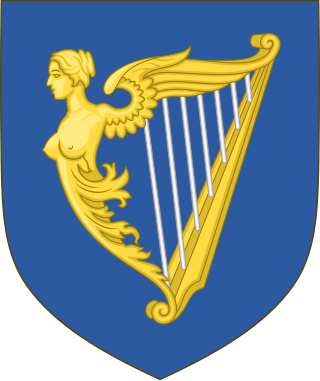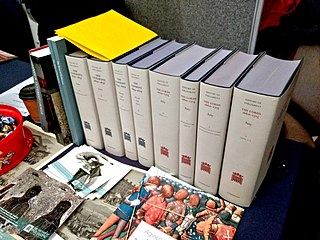This is a list of members of the Irish House of Commons between 1703 and 1713. There were 300 MPs at a time in this period.
This is a list of members of the Irish House of Commons between 1703 and 1713. There were 300 MPs at a time in this period.

The Irish House of Commons was the lower house of the Parliament of Ireland that existed from 1297 until 1800. The upper house was the House of Lords. The membership of the House of Commons was directly elected, but on a highly restrictive franchise, similar to the unreformed House of Commons in contemporary England and Great Britain. Catholics were disqualified from sitting in the Irish parliament from 1691, even though they comprised the vast majority of the Irish population.
The boundary commissions in the United Kingdom are non-departmental public bodies responsible for determining the boundaries of constituencies for elections to the House of Commons. There are four boundary commissions:

In the United Kingdom (UK), each of the electoral areas or divisions called constituencies elects one member to the House of Commons.

The Northern Ireland House of Commons existed from 1921 to 1973 as the lower House of the devolved legislature of the part of the United Kingdom called Northern Ireland.
Londonderry City was a parliamentary constituency in Northern Ireland. It returned one Member of Parliament (MP) to the United Kingdom House of Commons, elected by the first past the post voting system.

In the United Kingdom, a Member of Parliament (MP) is an individual elected to serve in the House of Commons of the Parliament of the United Kingdom.
Cromac, a division of Belfast, was a UK parliamentary constituency in Ireland. It returned one Member of Parliament (MP) to the House of Commons of the United Kingdom from 1918 to 1922, using the first past the post electoral system.
Dublin University is a university constituency in Ireland, which currently elects three senators to Seanad Éireann. Its electorate comprises the undergraduate scholars and graduates of the University of Dublin, whose sole constituent college is Trinity College Dublin, so it is often also referred to as the Trinity College constituency. Between 1613 and 1937 it elected MPs or TDs to a series of representative legislative bodies.
Antrim Borough was a borough constituency which elected two MPs to the Irish House of Commons, the house of representatives of the Kingdom of Ireland.
County Antrim was a constituency represented in the Irish House of Commons until 1800.
St Canice, also called Irishtown, was a constituency represented in the Irish House of Commons from the 1661 until 1800. Irishtown was a borough within the parish of St Canice in the county of the city of Kilkenny. The borough was separate from the city itself, which was represented by Kilkenny City constituency.
Belfast was a constituency in the Irish House of Commons, the house of representatives of the Kingdom of Ireland, until 1800.

The History of Parliament is a project to write a complete history of the United Kingdom Parliament and its predecessors, the Parliament of Great Britain and the Parliament of England. The history will principally consist of a prosopography, in which the history of an institution is told through the individual biographies of its members. After various amateur efforts the project was formally launched in 1940 and since 1951 has been funded by the Treasury. As of 2019, the volumes covering the House of Commons for the periods 1386–1421, 1509–1629, and 1660–1832 have been completed and published ; and the first five volumes covering the House of Lords from 1660-1715 have been published, with further work on the Commons and the Lords ongoing. In 2011 the completed sections were republished on the internet.